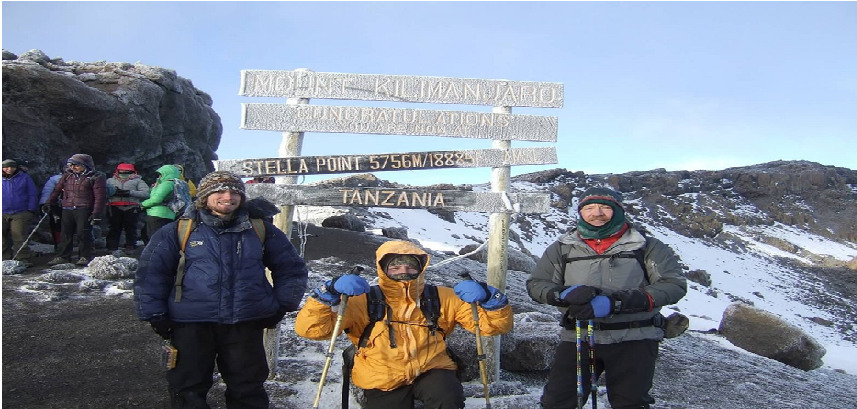A Kilimanjaro trek requires more than just determination – having the right gear is essential for a comfortable journey. Through this guide we aim to specify the must-have clothing essentials that are a must include in the Kilimanjaro Gear List. Capitalize on your chances of summit success with our essential packing list, covering everything from layering systems to outerwear essentials and must-have accessories.
LAYERING UP FOR THE KILIMANJARO CLIMB
Adopting a layering system sets up the foundation of clothing essentials for Mount Kilimanjaro Climbing. Understanding its importance and functionality significantly enhances the experience.
The layering system for a Kilimanjaro Gear List consists of three main components:
- Base Layer
- Insulation Layer
- Outer Layer
The base layer (typically made of moisture-wicking material like merino wool or synthetic fabric) is intended to keep your skin dry by moving sweat away from your body. This helps regulate body temperature and prevents hypothermia which can be an obstacle,especially during colder conditions or when ascending to higher altitudesbefore reaching the Uhuru Peak.
- The insulation layer provides warmth by trapping heat close to your body.
- Fleece jackets or down vests are popular choices for this layer due to their thermal properties.
- Depending on the Kilimanjaro Weather conditions and personal comfort level, adjustments can be made.
- Finally, the outer layer serves as protection against wind, rain, and snow.
- A waterproof and breathable jacket, preferably with sealed seams and an adjustable hood, shields climbers from the elements.
Properly layering clothing allows you to regulate your body temperature so that there is less risk of overheating or chilling.
CHOOSING THE RIGHT FOOTWEAR
During the process of choosing Kilimanjaro Climbing Footwear, place an emphasis on things like: comfort, support, and durability.
- Opt for hiking boots specifically designed for multi-day treks, featuring ankle support to reduce the risk of injury on uneven terrain.
- Look for boots with a sturdy, grippy sole to provide traction on rocky paths and muddy trails encountered during the ascent.
- Ensure a proper fit by trying on boots with the socks you intend to wear while Climbing Kilimanjaro.
- Your boots should have enough room to accommodate thicker socks without being too tight or causing discomfort.
- Break in your boots before the trek to prevent blisters and hotspots, gradually increasing wear time to allow the boots to conform to your feet’s shape.
Properly cared for and Best Hiking Boots for Kilimanjaro will carry you through the challenging terrain and varying climates.
KILIMANJARO CLOTHING CHOICES AND THE ACCESSORIES
Kilimanjaro Packing List Items such as hats, gloves, sunglasses, and neck gaiters offer essential protection against the sun, wind, and cold temperatures.
- A wide-brimmed hat with a chin strap provides shade from the sun and helps prevent sunburn.
- Wearing a hat can also help regulate body temperature by shielding your head from direct sunlight.
- Gloves are essential for warmth in cold conditions (particularly during early morning starts or summit night when temperatures drop significantly).
- Opt for insulated gloves or mittens that provide both warmth and flexibility.
- Sunglasses with UV protection protect your eyes from harmful sun exposure and glare off snow or ice. Choose sunglasses with wraparound frames.
- Neck gaiters or buffs serve multiple purposes, acting as a scarf to keep your neck warm, a face mask to protect against dust and wind, and a headband to keep sweat out of your eyes.
Including these accessories in the Mount Kilimanjaro Gear List will help you stay comfortable and prepared for the varying climate challenges.
Top Gear for Top Peaks, Kilimanjaro’s Clothing Checklist!
With careful consideration of each piece of clothing that makes up the whole of the Kilimanjaro Gear List, you’ll be well-equipped to tackle the challenges of Mount Kilimanjaro Climbing with confidence and comfort. We want you Remember durability and functionality when selecting gear, opting for high-quality materials and a proper fit to certify reliability throughout the climb.

